https://www.youtube.com/@TheBlessedOne-jq3cy
Why Do Catholics Use Incense?

At Mass and other liturgical services, priests and altar servers swing censers that send clouds ofincense wafting through the air.
Everything in Catholic liturgies symbolizes a theological truth—nothing is superfluous or “just for show.”
So what does incense symbolize?
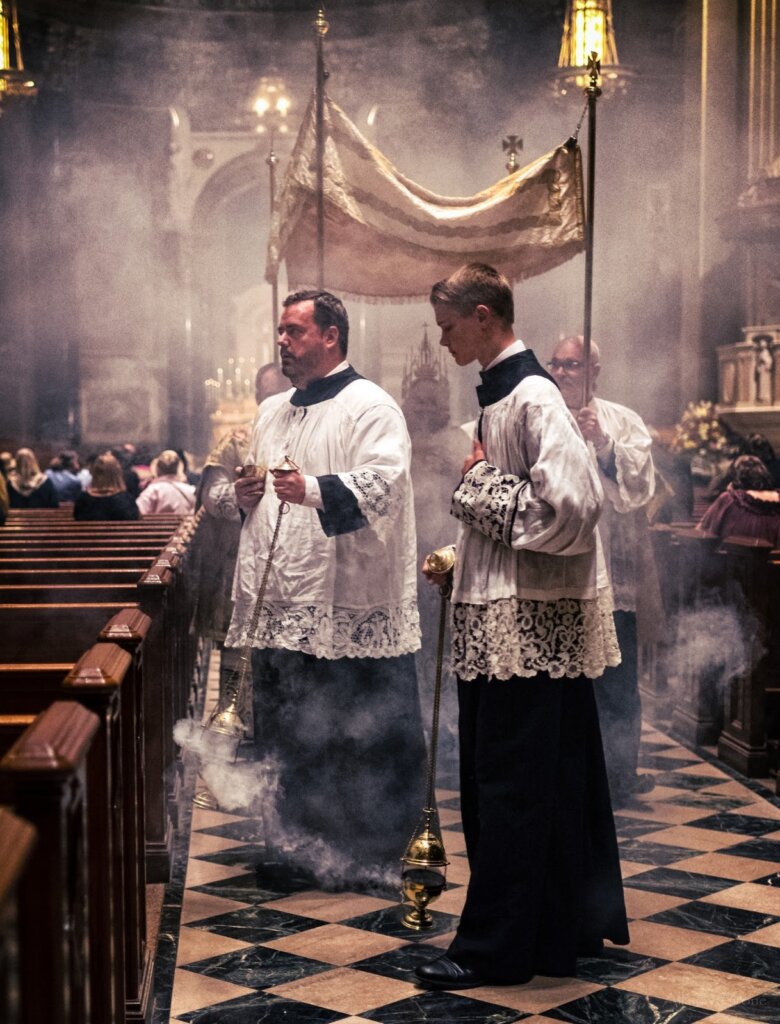
What Incense Symbolizes in Christian Liturgy
The smoke of incense is symbolic of sanctification and purification. It also symbolizes the prayers of the faithful. It is an outward sign of spiritual realities, which is why it has its place in Christian liturgy.
These two purposes reveal a deeper truth: that prayer itself purifies and sanctifies us, making us worthy of worshiping God in heaven for all eternity with the angels and saints.https://www.youtube.com/embed/M8zZE_HJd2g?feature=oembedThis video shows the world-famous giant thurible from St. James Cathedral (Santiago de Compostela) in Spain.
Many Bible commentators show how the Tabernacle in the Old Testament is a pattern of human beings as temples or dwelling places of the Holy Spirit. Before we can dwell with God in eternity, there is need for our purification and sanctification—the removal of sin. One of the ways this happens is through prayer.
This spiritual meaning is evident in the wisdom books of the Old Testament, in which prayer is connected with purification, making our prayer a sweet aroma rising up to God:
Let my prayer be counted as incense before thee, and the lifting up of my hands as an evening sacrifice!
—Psalm 141:2Listen to me, O you holy sons, and bud like a rose growing by a stream of water; send forth fragrance like frankincense, and put forth blossoms like a lily. Scatter the fragrance, and sing a hymn of praise; bless the Lord for all his works.
—Sirach 39: 13-14
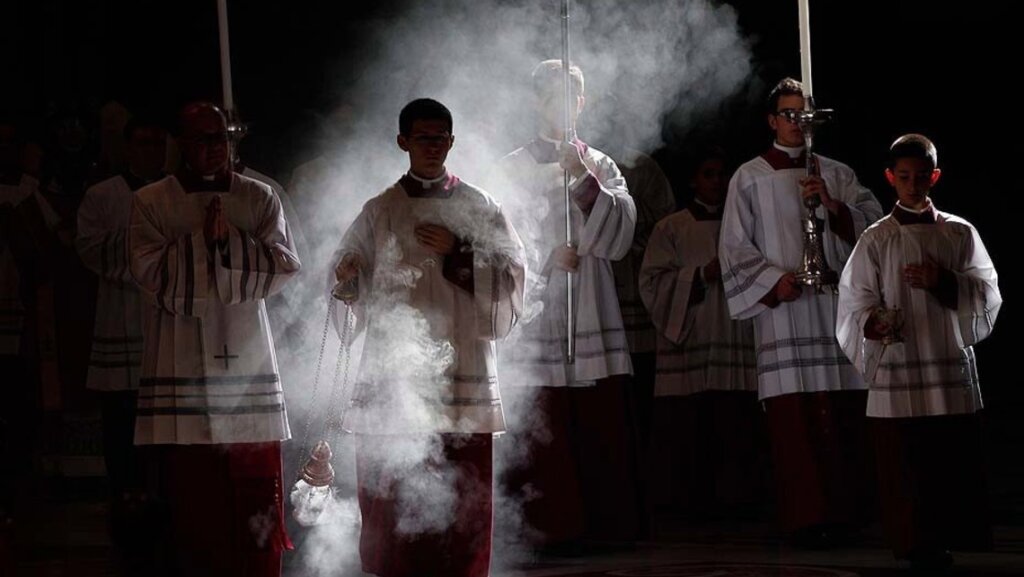
Incense in the Old Testament
Incense has been used in Christian liturgy from its earliest days. In fact, it continued the Jewish tradition that came before it—a tradition that was commanded by God Himself and recorded in Sacred Scripture.
For example, God commanded Moses to make an Altar of Incense for worship in the Tabernacle:
You shall make an altar to burn incense upon; of acacia wood shall you make it . . . And Aaron shall burn fragrant incense on it; every morning when he dresses the lamps he shall burn it, and when Aaron sets up the lamps in the evening, he shall burn it, a perpetual incense before the Lord throughout your generations.
—Exodus 30:1-10
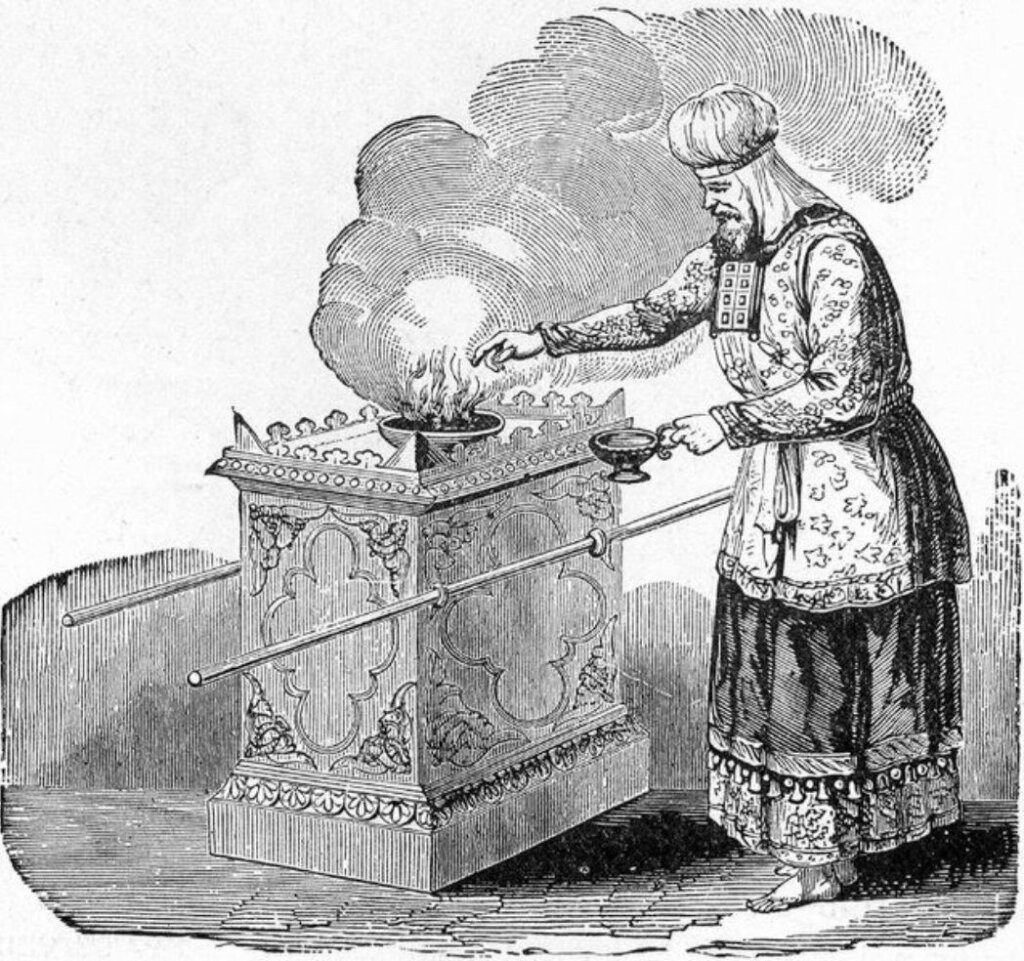
God also gave instruction on how the incense should be made through a “holy recipe”:
And the Lord said to Moses, “Take sweet spices, stacte, and onycha, and galbanum, sweet spices with pure frankincense (of each shall there be an equal part), and make an incense blended as by the perfumer, seasoned with salt, pure and holy; and you shall beat some of it very small, and put part of it before the testimony in the tent of meeting where I shall meet with you; it shall be for you most holy. And the incense which you shall make according to its composition, you shall not make for yourselves; it shall be for you holy to the Lord. Whoever makes any like it to use as perfume shall be cut off from his people.”
—Exodus 30:34-38
From these passages and others, we can infer that incense was part of a ritual cleansing and purification of the sacred space of the Tabernacle, making it a worthy place for the worship of God according to His divine terms. In fact, frankincense—mentioned frequently in the Bible—is now known to have antiseptic and disinfectant properties.
God gave these specific instructions to Moses because the worship of God by Israel in His earthly Tabernacle was a pattern of the worship of God by the angels in His heavenly throne; that is, worship on earth was intended to be united with the worship taking place in heaven.
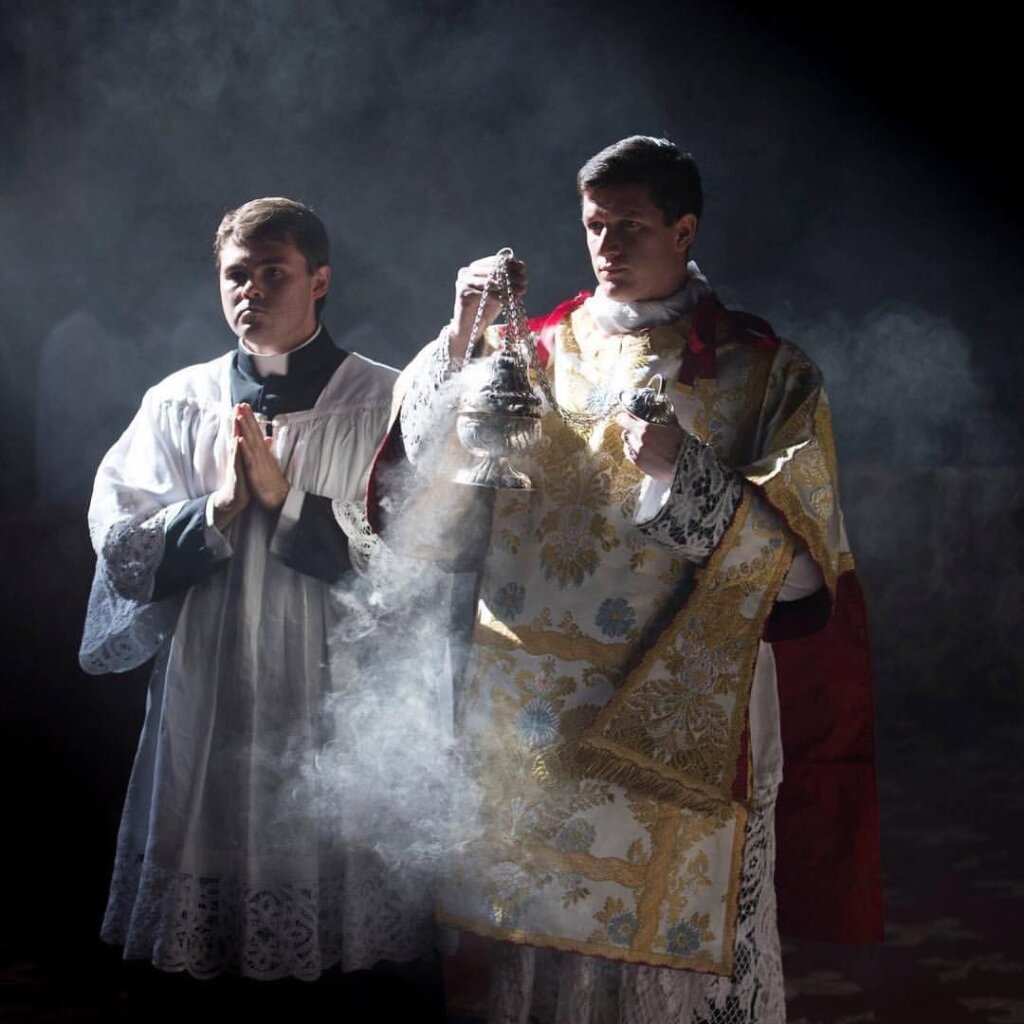
Incense in the New Testament
The New Testament also records the use of incense. Frankincense was one of the precious gifts brought by the Three Kings to the Baby Jesus—a sign of His role as priest in addition to His roles as prophet and king.
In his apocalyptic visions of heaven, St. John the Apostle recorded that he saw incense being used at God’s heavenly throne:
And between the throne and the four living creatures and among the elders, I saw a Lamb standing, as though it had been slain, with seven horns and with seven eyes, which are the seven spirits of God sent out into all the earth; and he went and took the scroll from the right hand of him who was seated on the throne. And when he had taken the scroll, the four living creatures and the twenty-four elders fell down before the Lamb, each holding a harp, and with golden bowls full of incense, which are the prayers of the saints.
—Revelation 5:6-8
In the above passage, incense is identified with the prayers of the saints.
In the passage below, incense is added to the prayers of the saints by an angel, highlighting the mediation of the angels in our worship of God:
And another angel came and stood at the altar with a golden censer; and he was given much incense to mingle with the prayers of all the saints upon the golden altar before the throne; and the smoke of the incense rose with the prayers of the saints from the hand of the angel before God.
—Revelation 8:3-4
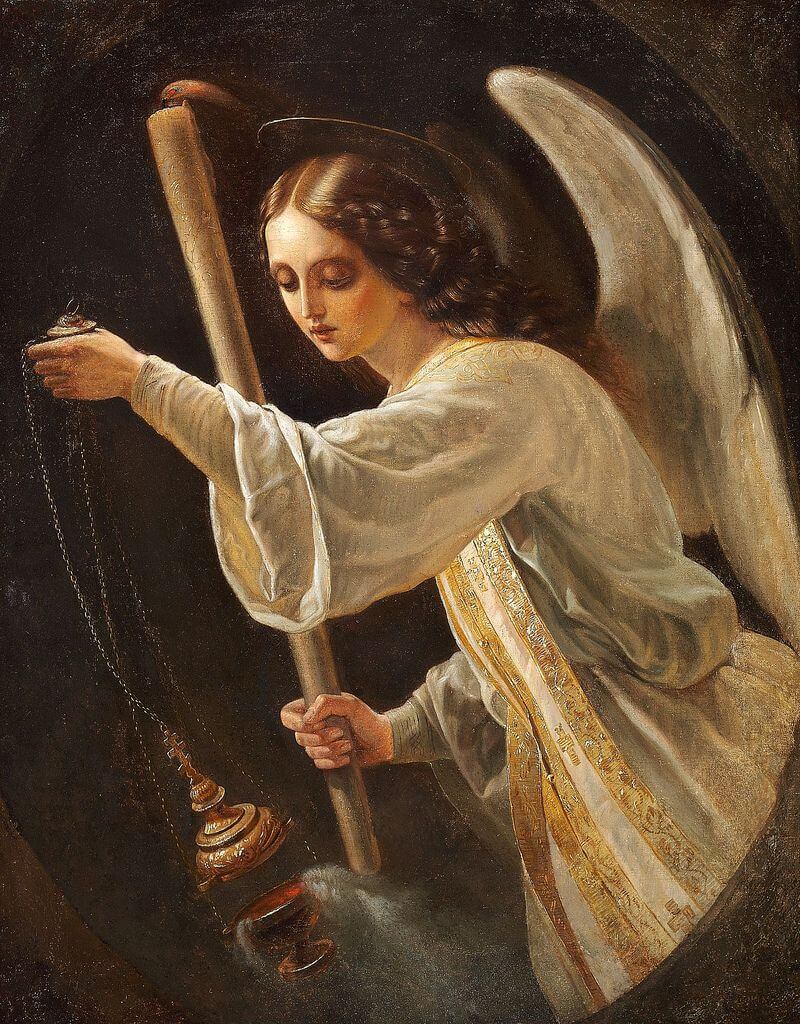
Incense Calls Us to Prayer
When we see incense at Mass, it reminds us of heaven; indeed, it should remind us that our worship of God in the Christian liturgy is divine in origin. Incense also reminds us to that our prayer rises to God like the smoke from the censer, purifying our worship of Him, and allowing the Holy Spirit to work in us and make us holy.
The usage of incense adds a sense of solemnity and mystery to the Mass. The visual imagery of the smoke and the smell remind us of the transcendence of the Mass which links heaven with earth, and allow us to enter into the presence of God.
—Father William Saunders
The Holy Sacrifice of the Mass transcends space and time, while the use of incense helps the worshiper to enter into this eternal reality through the use of the external senses.
That is why incense—fragrant to the senses and visually compelling for the mind and heart—is such a powerful liturgical gift.
